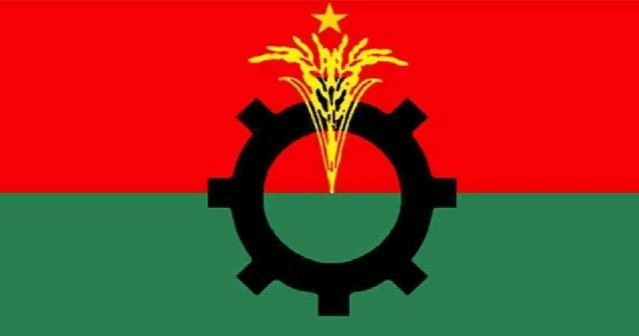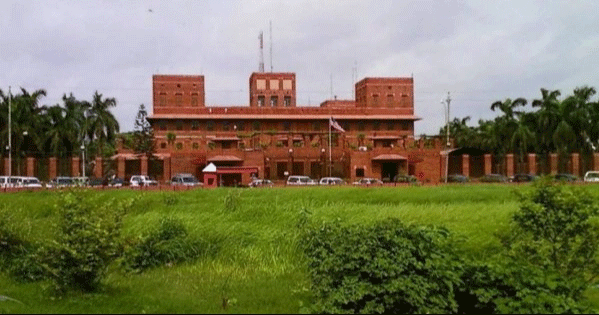Paddy at risk of heat shock
Fearing loss of over Tk 1000 cr
Zarif Mahmud: Mild to severe heat waves are sweeping across the country. In addition to peoples lives, crops are also affected. During the current Boro season, paddy heatstroke or heat shock is thought. The last major heat shock occurred in the country in 2021. In this, nearly half a million hectares of paddy land is scorched by heat. The width of damage was hundreds of crores of taka. Agricultural experts fear such damage this year too if the ongoing heatwave does not subside soon.
In April 2021, the heat wave showed its strength once. At that time, Boro rice was in the flowering stage all over the country. At that time the maximum temperature rose to 40 degrees Celsius, which is well above the critical temperature of 35 degrees Celsius for paddy. It caused great damage by drying up the blossoms of Boro rice.
This year too, the country is facing similar adverse weather conditions. Rather, the temperature is higher than that time. Flowering stage of Boro rice is going on all over the country except Haur area. About two-thirds of the paddy fields are passing this time. Thats why experts are seeing a big risk of heat shock again.
Heat shock or heat injury can be caused by excessive temperature increase or decrease. 35 degrees Celsius is considered the level of heat shock. Right now, more than 40 districts of the country are experiencing mild to severe heat waves. Last Saturday, the highest temperature of this year was recorded in Jessore, 42.6 degrees Celsius. According to the Meteorological Department, if the maximum temperature is 36 to 37.9 degrees Celsius, it is a mild heat wave, 38 to 39.9 degrees Celsius is a moderate heat wave, 40 to 41.9 degrees Celsius is an intense heat wave, and 42 degrees Celsius or more is called a very intense heat wave. There is a severe heat wave going on in the country now. Due to which heat alert has been issued in the country.
Bangladesh Rice Research Institute (BRI) Chief Scientific Officer (Plant Physiology Department) Dr. Md. Sajjadur Rahman told, “Due to such adverse weather conditions, risks have arisen with Boro rice. Flowering stage is now going on all over the country except Haur region, which is a very sensitive condition for paddy. Pollination is not timed properly. Because normal pollination takes place around 9:30 am to 11:30 am, when the temperature is going over 35 degrees.
He said, “We have also gone to the field on the ground. Another problem is due to temperature. Rice grains are not forming properly. Because the rice plant produces food during the day, which breaks down at night to produce rice grains. It is obstructing. Because night temperature is also high. Due to which the nutrition of rice (grain filling) is decreasing. That is, the carbohydrate seeds inside the rice husk are getting smaller. It will affect the overall production. That is, it will decrease.
Rice researchers see this kind of heat shock in agriculture as a new challenge of climate change. This new risk in the country is not well known to common people. Again, there is no remedy for this condition except lowering the temperature. The Boro season starts in November (Kartika-Agrahayan) but ends in the extremely hot months of April-May (Baishakh-Jyashtha). During the past few years, there has been a severe heat wave. During flowering, if there is an intense heat wave for one to two hours, the paddy becomes excessively dry. Again, there are periods of heat wave. Heat shock occurs for rice whenever there is a heat wave and there is no rain at that time. That is, when the rice flowered during a rainless heat wave, it withered.
Sajjadur Rahman said, “Since 2012, we have kept heat shock information. Heatshock happened once in 2007. In addition, some areas have experienced small-scale heat shocks for several years. So far there have been heat shocks in Jessore Sadar, Sirajganjs Tarash, Gazipurs Kaliakair and Mymensinghs Shambhuganj. However, it is sometimes in one or two fields of the village or in a field in an area. The first major heatshock occurred in 2021.
Chief scientific officer Dr. Md. Najmul Bari said, “If it doesnt rain, we will suffer a lot. I am in the most vulnerable state. It is suggested to compensate the loss to the farmer. But in this situation, the farmer has little to do.
Nazmul Bari said, This is a new challenge of climate change in agriculture. In addition to heat shock, diseases are increasing at this temperature. Blast, BLB and BLS diseases are seen.
BRRIs warning
Recently, in this heatwave, farmers have been warned by Brri. It is said that during the flowering and pollination of rice, the grains of rice in which flowers bloom are in a very active state. In this condition, the plant releases a large amount of water in the process of transpiration to protect the rice grains from the damage of hot air (luhawa). This sensation acts much like the cooling system of the plants physiological processes.
Therefore, the way to protect the paddy from the heat shock damage of intense fire is to retain enough water in the boro paddy field and two to three inches of water must be kept in the paddy field until the grains are hard. Besides, moderate use of some chemical fertilizers can protect rice plants from these adverse conditions.
Things to do in Heatshock
There is no alternative to holding water in the land to protect rice from heat waves. There should be no shortage of water in the land. At least two to three inches of water should be kept in the paddy field at all times. So that even if the temperature is high, if there is water, it will work as a cooling system. If the temperature can be kept below 35 degrees Celsius, then this problem will not occur.
In addition, in this condition, there may be an attack of leaf blast disease. Therefore, before the symptoms of the disease appear, trooper 8 grams in 10 liters of water or Nativo 6 grams in 10 liters of water should be sprayed twice on every 5 percent of the land at an interval of five days.
Besides, BLB and BLS diseases are widely seen in rice. In this case, 60 grams of thiovit, 60 grams of potash and 20 grams of zinc should be mixed equally in 10 liters of water and sprayed on five percent of the land.
According to the information of the Department of Agriculture Extension, in the fiscal year 2023-24, boro rice has been planted in 50 lakh 58 thousand hectares of land. Where the production target is two crore 22 lakh 564 tons. So far Boro Deductions have been made only in Howar region. Paddy harvesting has been going on there for three days. In the first two days, 77 thousand hectares of paddy has been harvested.
President Joe Biden tests positive for COVID-19 while campaigning in Las Vegas, has ‘mild symptoms’
International Desk: President Joe Biden tested positive for COVID-19 while traveling Wedne…








